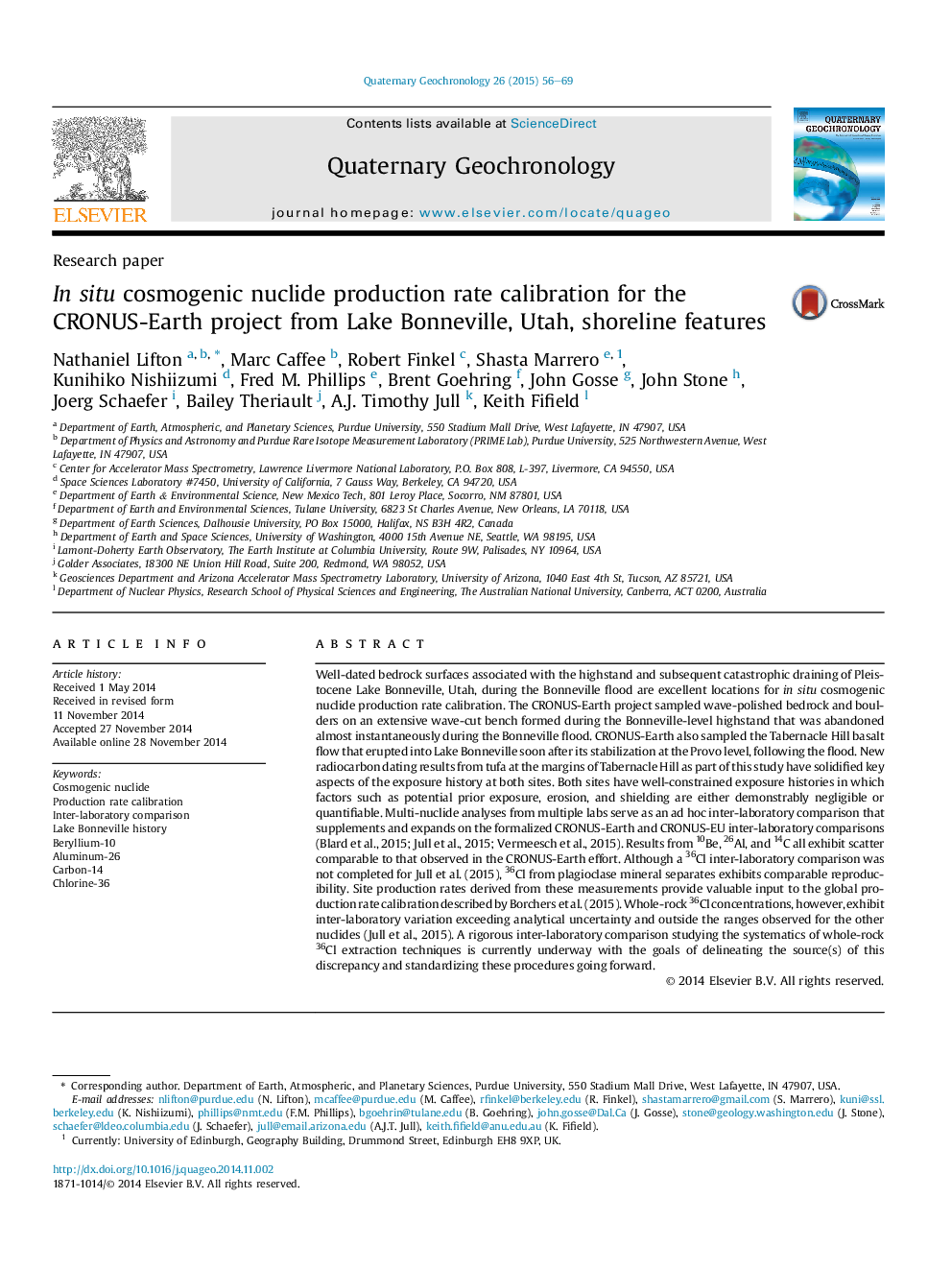| کد مقاله | کد نشریه | سال انتشار | مقاله انگلیسی | نسخه تمام متن |
|---|---|---|---|---|
| 4724921 | 1639850 | 2015 | 14 صفحه PDF | دانلود رایگان |

Well-dated bedrock surfaces associated with the highstand and subsequent catastrophic draining of Pleistocene Lake Bonneville, Utah, during the Bonneville flood are excellent locations for in situ cosmogenic nuclide production rate calibration. The CRONUS-Earth project sampled wave-polished bedrock and boulders on an extensive wave-cut bench formed during the Bonneville-level highstand that was abandoned almost instantaneously during the Bonneville flood. CRONUS-Earth also sampled the Tabernacle Hill basalt flow that erupted into Lake Bonneville soon after its stabilization at the Provo level, following the flood. New radiocarbon dating results from tufa at the margins of Tabernacle Hill as part of this study have solidified key aspects of the exposure history at both sites. Both sites have well-constrained exposure histories in which factors such as potential prior exposure, erosion, and shielding are either demonstrably negligible or quantifiable. Multi-nuclide analyses from multiple labs serve as an ad hoc inter-laboratory comparison that supplements and expands on the formalized CRONUS-Earth and CRONUS-EU inter-laboratory comparisons (Blard et al., 2015; Jull et al., 2015; Vermeesch et al., 2015). Results from 10Be, 26Al, and 14C all exhibit scatter comparable to that observed in the CRONUS-Earth effort. Although a 36Cl inter-laboratory comparison was not completed for Jull et al. (2015), 36Cl from plagioclase mineral separates exhibits comparable reproducibility. Site production rates derived from these measurements provide valuable input to the global production rate calibration described by Borchers et al. (2015). Whole-rock 36Cl concentrations, however, exhibit inter-laboratory variation exceeding analytical uncertainty and outside the ranges observed for the other nuclides (Jull et al., 2015). A rigorous inter-laboratory comparison studying the systematics of whole-rock 36Cl extraction techniques is currently underway with the goals of delineating the source(s) of this discrepancy and standardizing these procedures going forward.
Journal: Quaternary Geochronology - Volume 26, February 2015, Pages 56–69